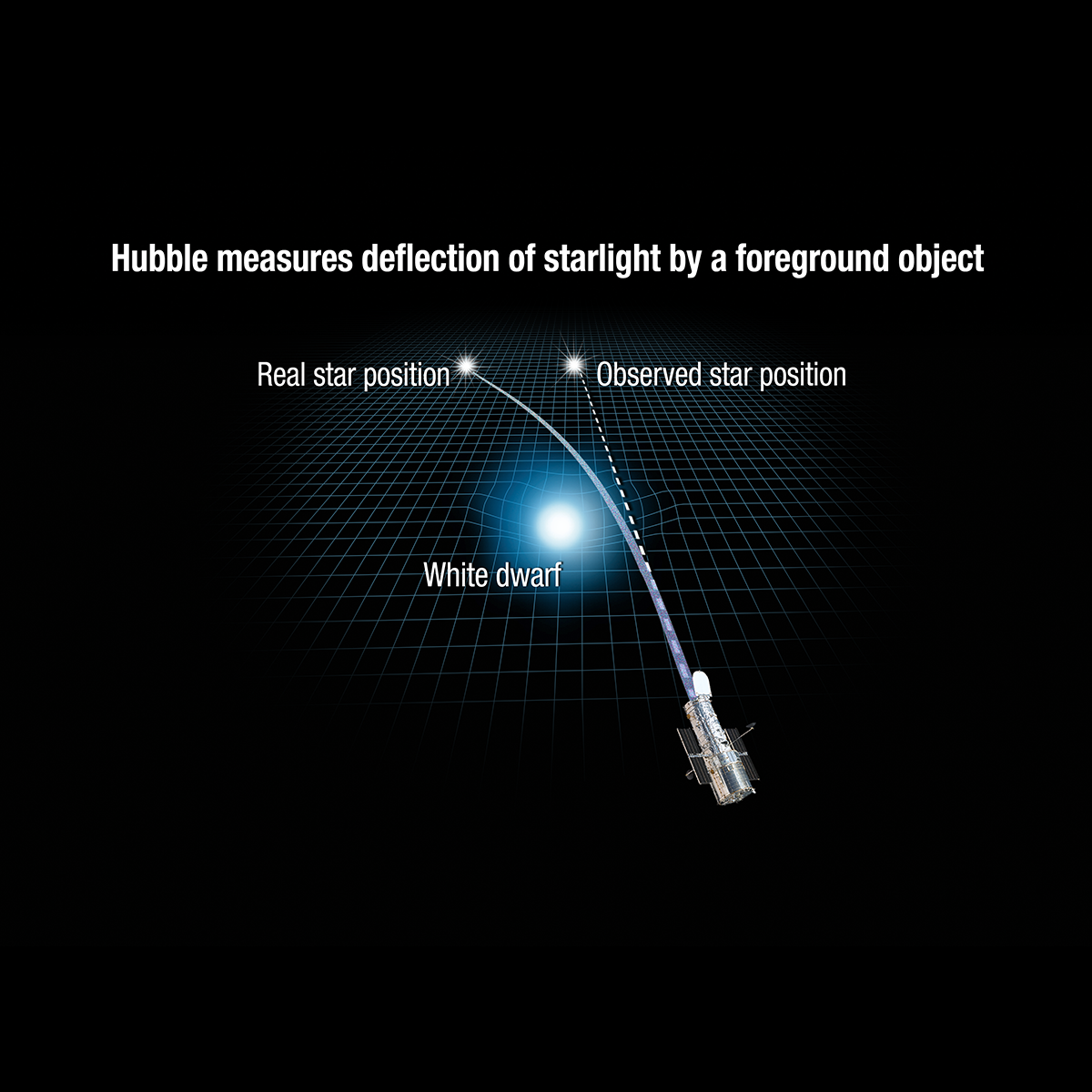
Summary
Astronomers Use a Trick of Nature to ‘Weigh’ a Dead Star
A famous 1923 short poem “Nothing Gold Can Stay” written by Robert Frost ends with: “So dawn goes down to day. Nothing gold can stay.”
Though Frost was talking about a day on Earth, this also applies to the next 5 billion years, when the golden Sun will eventually burn out and collapse down to a seething white hot cinder of its former glory. Astronomers call the stellar remnant a white dwarf. An estimated 10 billion of these stellar corpses are scattered across our galactic graveyard.
Though the Sun’s ultimate fate is far into the future, astronomers want to learn a lot about the white dwarfs now. White dwarfs give us clues into how stars evolve over billions of years. Astronomers collect a lot of information by dissecting the light from a white dwarf through spectroscopy. And, knowing a dwarf’s mass is one of the most important factors in a star’s evolution. But it’s not easy to weigh a white dwarf, or any other kind of star. There aren’t any bathroom scales in space.
Isaac Newton’s law of universal gravitation allowed for Earth’s mass to be estimated by watching the orbit of the Moon. The same Newtonian equations can be used to measure the mass of a white dwarf orbiting a companion star. But astronomers used Hubble to make a completely different mass estimate for a white dwarf that doesn’t have a stellar companion that’s needed for applying Newtonian physics.
They had to turn to more modern physics – Einstein’s general relativity — that explains how a massive object’s gravity warps space. This creates a pothole in the fabric of space that bends the light of a background star as a foreground object is passing in front of it. The greater the deflection on the sky, the more massive the bypassing body. But the amount of deflection in infinitesimally small, and requires Hubble’s sharp vision – and some patience. This precision measurement was done for the nearby, fast moving white dwarf LAWD 37. Astronomers measured a mass of 0.56 times our Sun’s mass. And, this nicely agrees with theories about what a typical white dwarf should weigh.

